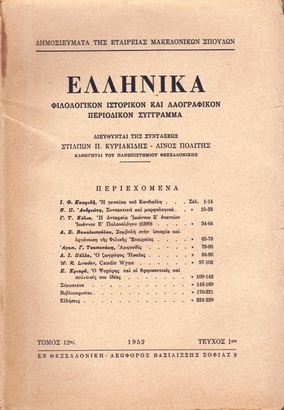Παρατηρήσεις για την τεχνητή εικόνα και το » υπερβατικό πρότυπο στην αρχαία ελληνική θεωρία της τέχνης
Part of : Ελληνικά : φιλολογικό, ιστορικό και λαογραφικό περιοδικό σύγγραμμα ; Vol.47, No.1, 1997, pages 71-94
Issue:
Pages:
71-94
Parallel Title:
Remarks on the Art Image and the Transcendental Prototype in the Ancient Greek Theory of Art
Author:
Abstract:
The study examines the aesthetic implications of the concept of the image (eikon) in a series of texts from the Pre-Socratics to the Neo-Platonists. Reading the texts makes it possible to reconstruct four paradigms that have been used or assumed for the interpretation of the relationship between the image and its prototype: (1) the «natural attitude», the belief in similitude based on energy (archaic period and popular religiosity); (2) «the "aesthetic attitude", the restriction of the real being to the external appearance (Classical period) and the image as an objectification of form (Aristotle); (3) the «ethical/religious attitude», the image as a locus of the presence of the transcendental (imperial period); (4) the «metaphysical attitude», the deceptive appearance of the image and the reprehensible concealment of the real being (Plato, with certain differentiations) or the image as an expression of the transcendental (according to the Neo-Platonist idea of emanation). Attention is given to a typology of the image, with special reference to its ontological status (which depends on appreciation of the sensible world), its prototype (invisible or ontologically different), its mode of production (imitation, resemblance, fantasy or inspiration) and its function (artistic, educational or religious). Despite the iconoclastic disposition of many philosophers, the image was regarded and used as a necessary link and as a means of ascent from the sensible to the intelligible.
Subject:
Subject (LC):
Notes:
Ευχαριστώ την Ευρυδίκη Κεφαλίδου για τις διορθώσεις της στα σχόλια σχετικά με την αρχαία τέχνη




